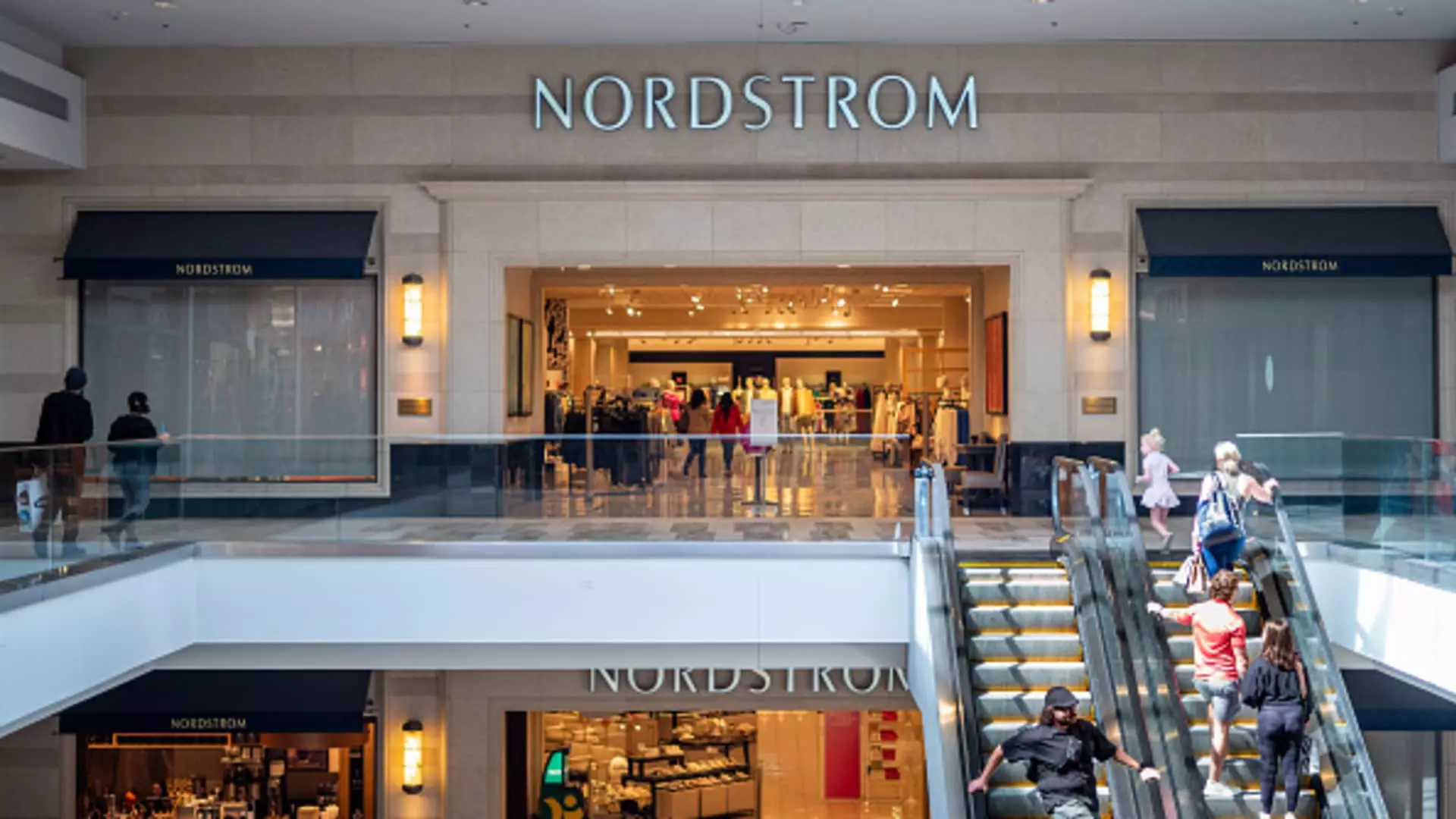Nordstrom, the iconic Seattle-based department store, has recently revised its full-year sales projections upwards, following a surprisingly robust performance during the holiday shopping season. This adjustment follows a pattern observed across multiple retailers but notably highlights both the dynamic consumer preferences and the strategic shifts within Nordstrom’s operational model. The retailer sharpened its forecast for revenue growth, now anticipating an increase of 1.5% to 2.5%, a significant improvement from its prior estimate which predicted flat growth through the year. Such an adjustment, however, has come while maintaining its profit guidance, illustrating a calculated approach to navigating complexities within the retail sector.
In late November, Nordstrom adopted a notably cautious stance, projecting only a minimal range of growth from flat to 1%. This conservative viewpoint stemmed from a perceived decline in sales trends identified towards the end of October, which CEO Erik Nordstrom acknowledged during an earnings call. However, this scrutiny did not diminish the retailer’s competitive edge throughout the holiday period. Ultimately, net sales grew by 4.9%, with comparable sales (which exclude distortions from new store openings or closures) advancing by an impressive 5.8%. These statistics reflect a resurgence in consumer spending that many retail analysts were eagerly awaiting in the tumultuous landscape of post-pandemic shopping.
Nordstrom attributed its unexpected spike in holiday sales to a combination of strategic promotional activities and an enhanced product offering designed to resonate with consumer needs. In an environment characterized by heightened competition and shifting buyer preferences, the company focused on remaining attractive to consumers through various promotional efforts. This commitment bore fruit, evidenced by a 3.7% rise in net sales at Nordstrom and an even more significant growth of 7.4% at its off-price outlet, Nordstrom Rack. Consumers, driven by deals and discounts, appear increasingly inclined to explore value-driven shopping options, a trend that Nordstrom effectively leveraged.
The broader retail landscape presents a growing intrigue, with several major corporations—such as Walmart, Macy’s, and Best Buy—preparing to announce their fiscal results in the forthcoming weeks. Early reports indicate a healthy environment for U.S. consumers, with Adobe Analytics revealing nearly a 9% increase in online spending during the crucial holiday season. Remarkably, total spending reached $241.4 billion during a key shopping timeframe from November 1 to December 31, providing a positive backdrop for Nordstrom’s optimistic outlook.
The intersecting data from Mastercard SpendingPulse further emphasizes this upward trajectory, revealing a 3.8% year-over-year increase in retail sales—excluding the automotive sector—between November 1 and December 24. This intersection of data offers a broader context for understanding Nordstrom’s recent performance and paints a promising picture for the retail industry at large during a pivotal shopping season.
Adding further complexity to the narrative is the prospective transition of Nordstrom into private ownership, following a substantial $6.25 billion buyout deal announced in December. The acquisition, led by the founding family alongside Mexican retailer El Puerto de Liverpool, signifies a potential shift in strategy and scalability for the brand. Set to finalize in the first half of 2025, this transition could allow Nordstrom greater flexibility in adapting to rapid market changes without the immediate pressures from public investors.
As Nordstrom’s stock fluctuates—closing at $24.01, down about 4% from a recent 52-week high—its trajectory serves as a bellwether for the larger retail environment. The strategies employed during this season not only showcase Nordstrom’s adaptability but also set a course for future growth in an unpredictable sector. With consumer spending trends leaning positively, the department store is well-positioned to navigate the upcoming challenges and capitalize on emerging opportunities in the fast-evolving retail marketplace.

